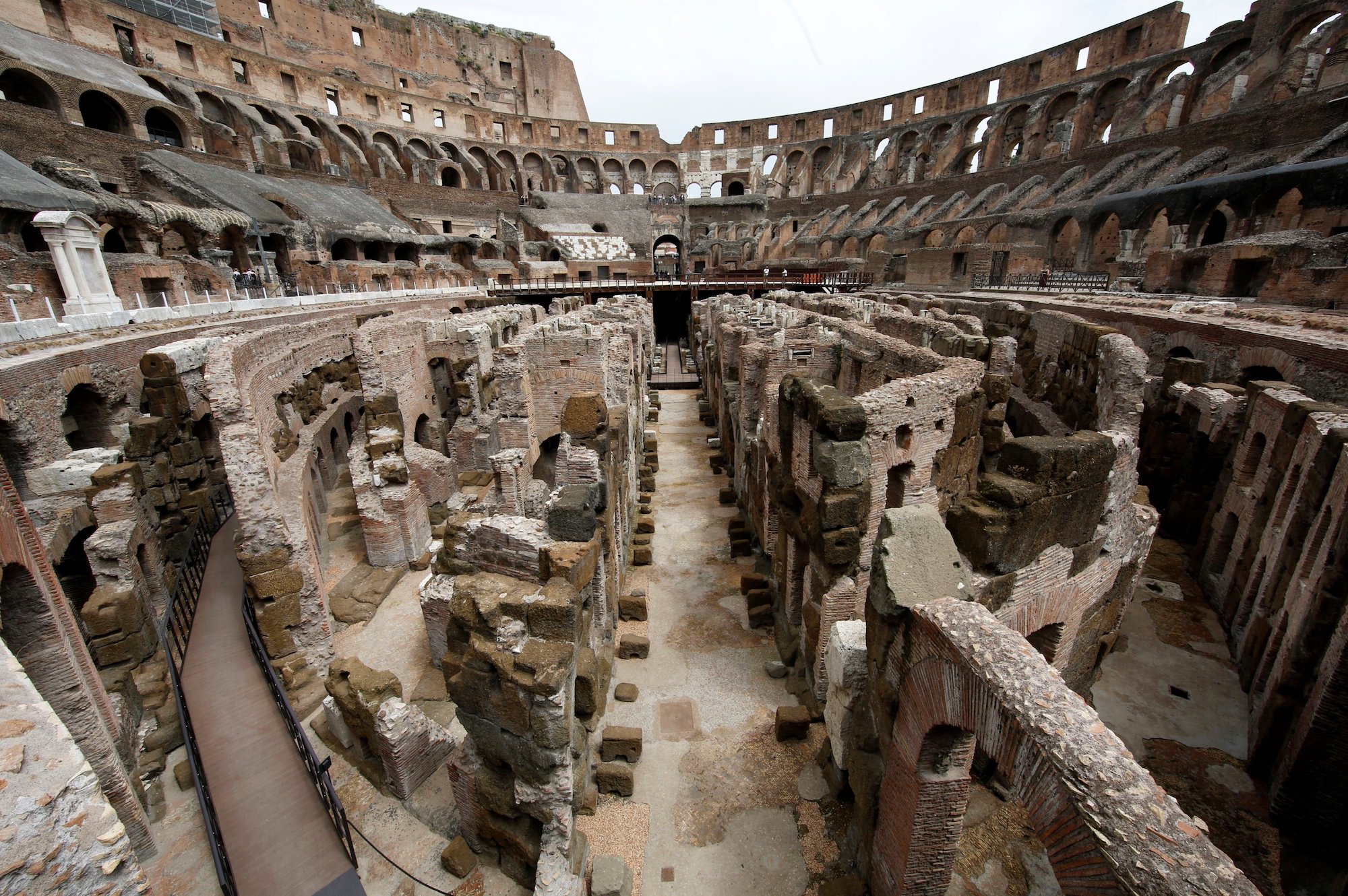The Colosseum might be Italy’s most visited site at 7.6 million annual visitors before the pandemic, but none were able to view the monument’s majesty from the perspective of a gladiator entering mortal combat on the arena floor. That’s changing thanks to two interventions, the most recent encompassing a renovation of the subterranean pathways (known as the “hypogea”) that snake beneath the arena floor. More than 80 archaeologists, architects, and engineers worked to install 525 feet of wooden walkways throughout the underground network, making it accessible to visitors for the first time in the amphiteatre’s nearly 2,000-year history.
“Each stone here is a witness of everything that occurred under the great arena of the Colosseum, from its inauguration in AD 80 to its final performance in AD 523,” said Alfonsina Russo, director of the Colosseum and its archaeological park.
The restoration forms the second part of a larger, three-phase project funded by a nearly $30 million gift from the Italian fashion label Tod’s, which commenced in 2013 with a cleaning of the Colosseum’s facade; the upcoming third part will overhaul its galleries. The gift sparked controversy at first, with detractors claiming that private money shouldn’t fund the upkeep of cultural heritage. These concerns were largely dismissed by Dario Franceschini, Italy’s minister of culture, who claimed that “the great Italian companies, beyond what they export to the world, have Italy, its art, and its beauty behind them.” Many seem to agree—in the past decade, Fendi funded the restoration of Rome’s Trevi Fountain and Bulgari financed a refresh of the Spanish Steps.
The interventions will likely dovetail with the construction of a retractable arena floor, slated for completion in 2023, that covers the hypogea and allows for visitors to view the Colosseum from the perspective of a gladiator. Spearheaded by the consulting firm Milan Ingegneria, the intervention will create a lattice of specially treated wooden slats that can rotate for air circulation, shield the hypogea from the elements, and make it visible from above.
“We need pride in these weeks of reboot,” said Franceschini. “Our people have always given their best in times of difficulty. Our predecessors demonstrated this in the immediate post-war period, when they rolled up their sleeves in a divided and torn country, making it an industrial power in a few years. We will return to demonstrate it now, and I am happy this is happening in the name of culture.”


